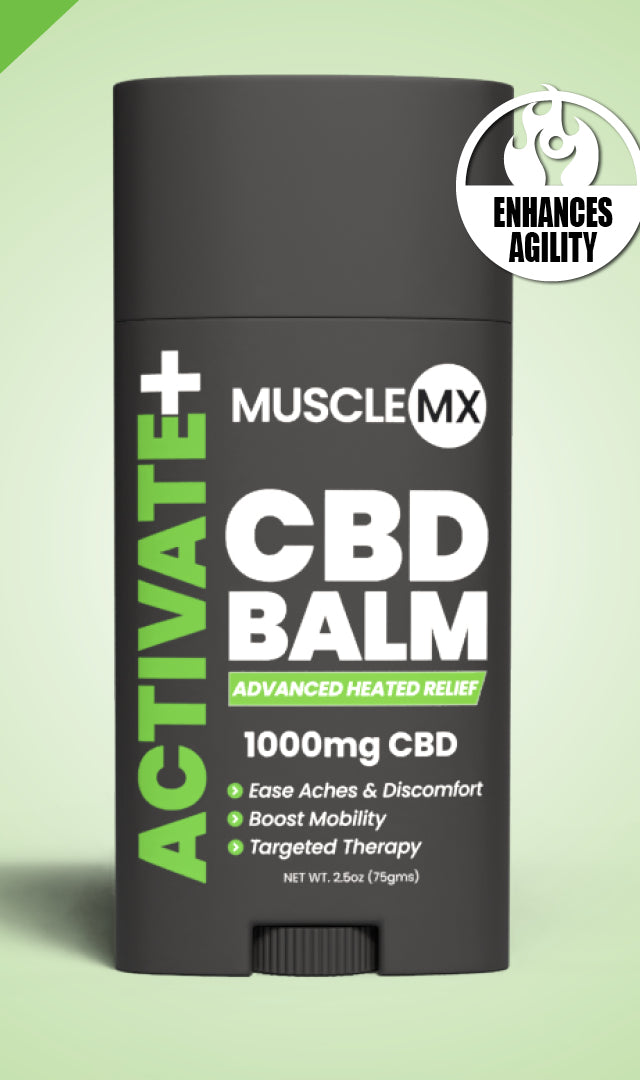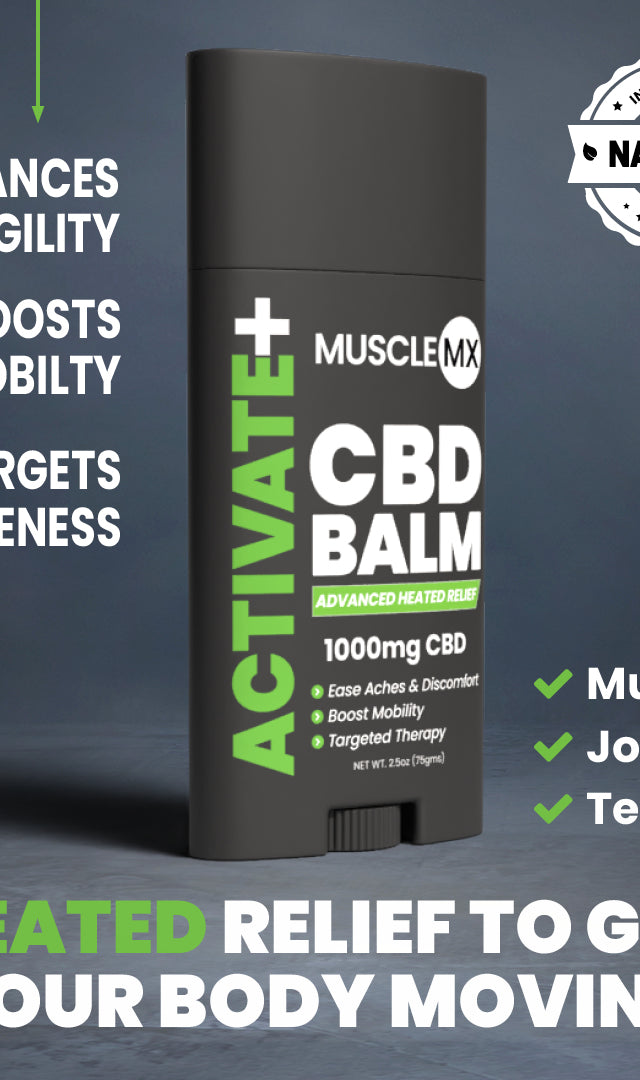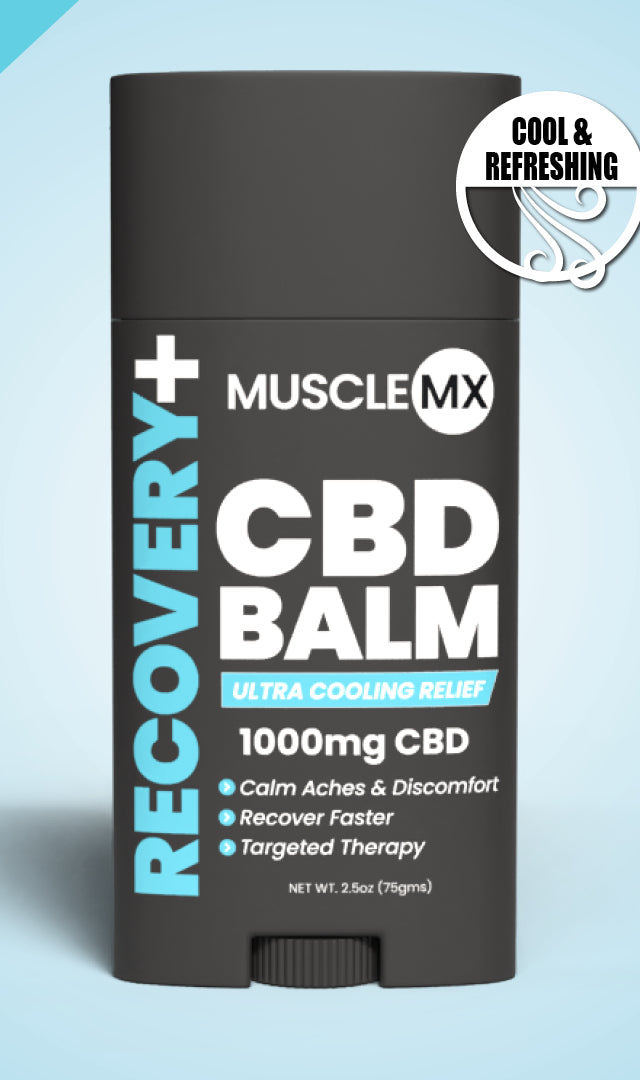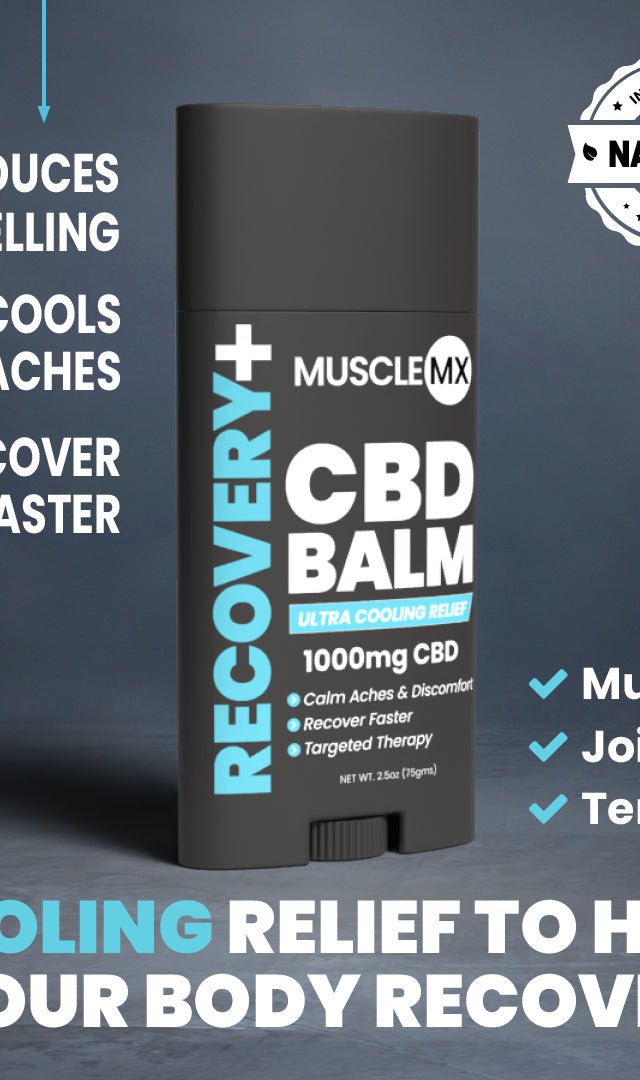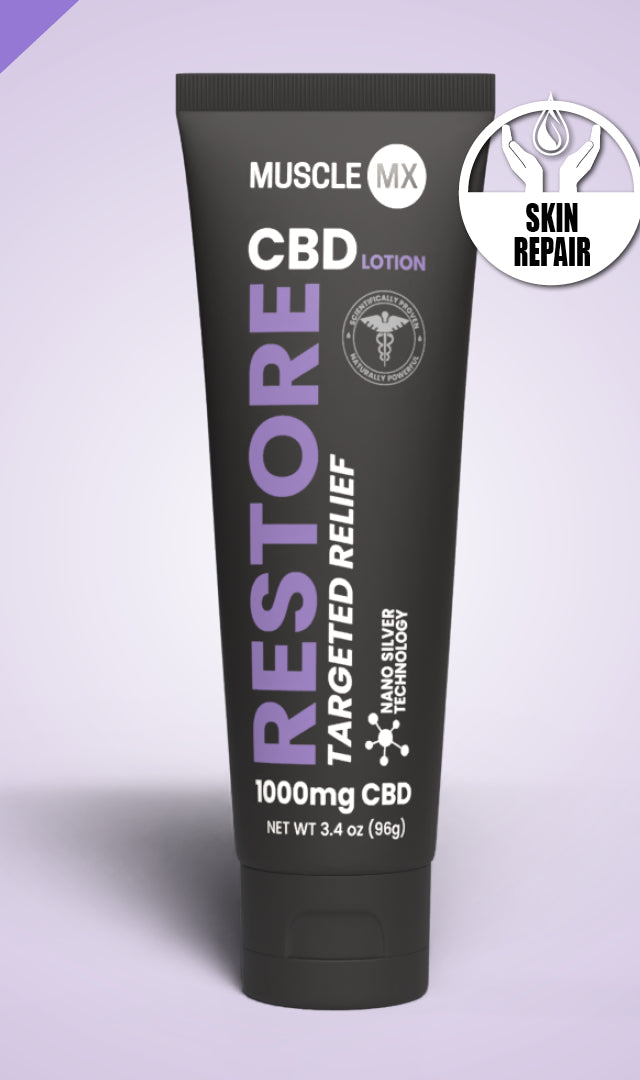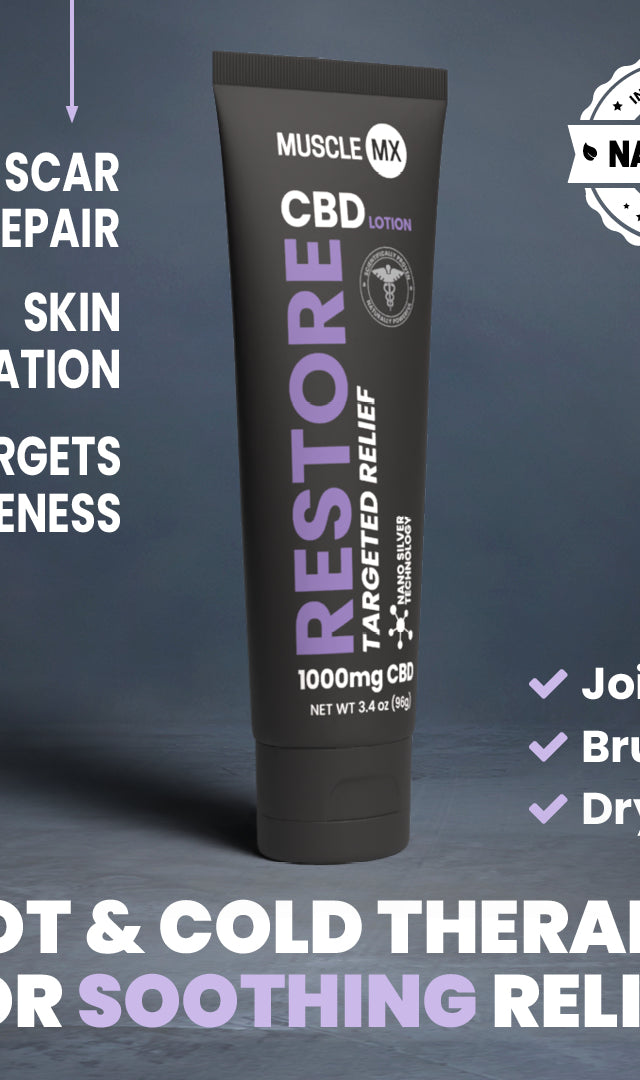7 Causes for Upper Arm Pain & Relief Methods
Upper arm discomfort is a common experience that can affect anyone. It's a prevalent issue that can stem from a variety of sources, and understanding its common causes and potential relief methods is key to maintaining and supporting better arm health.
We will explore some main causes of upper arm discomfort, from overuse and injury to certain health conditions. Whatever the cause, we’re here to give you the knowledge you need to understand why your upper arm might feel less than its best and what you can do about it.
What Can Upper Arm Discomfort Feel Like?
Upper arm discomfort can manifest in various ways, and the sensations can vary greatly based on the individual and the cause of the discomfort. For some, it may feel like a dull, throbbing ache that's always present, while for others, it might be a sharp, sudden twinge that comes and goes.
You might also experience feelings of numbness or tingling, almost as if your arm has fallen asleep. This could indicate nerve involvement, such as a pinched nerve or tunnel syndrome.
The discomfort may also be exacerbated during certain activities, like lifting heavy items or moving your arm in certain ways. For instance, if you have a shoulder impingement, you might feel a pinch or discomfort when you try to lift your arm above your head.
It's important to remember that these sensations are your body's way of telling you that something isn't quite right. If you're experiencing persistent or severe discomfort, reaching out to a healthcare professional is a good idea.
What Are Common Causes of Upper Arm Discomfort?
Exploring the possible causes of upper arm discomfort can help you better understand and manage this common condition.
1. Overuse
Overuse is one of the most common reasons your arm might hurt. This can happen when you repeat the same arm movements too often, such as lifting heavy items or engaging in activities like tennis or swimming. Over time, this can put undue stress on your muscles and tendons, like the bicep tendon or rotator cuff, leading to discomfort.
2. Injury
Injuries, such as a pinched nerve, rotator cuff injury, or even tennis elbow, can also cause upper arm discomfort. These injuries often occur due to accidents, falls, or the wear and tear of physical activities. Depending on the severity and nature of the injury, they can cause a range of sensations, from a dull ache to a sharp twinge. Sometimes, a rotator cuff tear can also lead to significant upper arm discomfort.
3. Ligament Sprains
Ligament sprains are another common cause of upper arm discomfort. These occur when the ligaments — the tissues connecting bones — are stretched or torn. This can happen from sudden movements or accidents, leading to discomfort and swelling in the upper arm. A severe sprain could even result in a shoulder dislocation, causing intense discomfort.
4. Shoulder Impingement and Frozen Shoulder
Shoulder problems like shoulder impingement and frozen shoulder can also lead to upper arm discomfort. Shoulder impingement happens when the shoulder blades put pressure on the surrounding soft tissues whenever the arm is lifted, while a frozen shoulder is characterized by stiffness and limited range of motion in the shoulder joint. Both conditions can cause discomfort that extends to the upper arm.
5. Calcium Buildup
Calcium buildup in the shoulder or arm can contribute to discomfort. This condition, known as calcific tendinitis, occurs when calcium deposits form on the tendons of your rotator cuff. This can limit mobility and put pressure on surrounding tissues, causing discomfort in the upper arm.
6. Heart-Related Causes
In some cases, upper arm pain in the left arm can be a symptom of serious heart conditions like angina and heart attacks. This happens because the nerves in the heart and the arm are linked, and discomfort signals from the heart can be interpreted as coming from the arm.
If you’re experiencing pain in the left arm along with other signs of a heart attack, such as chest discomfort, shortness of breath, jaw pain, cold sweats, nausea, or lightheadedness, it is important to seek immediate medical attention.
7. Certain Medical Conditions
Certain medical conditions, such as a herniated disk or tunnel syndrome, can cause upper arm discomfort. These conditions affect the nerves and can lead to feelings of discomfort, numbness, or tingling in the arm. Rheumatoid arthritis and osteoarthritis are two such conditions that can cause joint discomfort in the upper arm.
Understanding the potential causes can help you take the right steps towards supporting your arm health and overall well-being.
How Is Upper Arm Discomfort Diagnosed?
When you first visit a healthcare professional about your upper arm discomfort, they'll likely start with a series of questions. They'll want to know when the discomfort started, what it feels like, and if anything seems to make it better or worse. They might also ask about any recent injuries or activities that could have contributed to the discomfort and your family health history.
Next, they'll typically perform a physical exam. This might involve them touching or pressing on different parts of your arm to identify any areas of tenderness or swelling. They'll also likely ask you to move your arm in certain ways to assess your range of motion and see if any particular movements trigger your discomfort.
Depending on their findings, they might recommend further tests. These could include X-rays or other imaging tests, which can provide a more detailed view of the bones and tissues in your arm and help identify any abnormalities.
It's important to remember that diagnosing upper arm discomfort can sometimes take time and may require multiple tests. However, understanding the cause of your discomfort is the first step towards finding effective methods to ease tension and support better arm health. Always consult a healthcare professional if you're experiencing persistent or severe discomfort.
What Are Relief Methods for Upper Arm Discomfort?
When it comes to managing upper arm discomfort, there are several approaches you can take. Depending on the reason your arm hurts, certain treatment options may be more effective than others.
RICE Method
The RICE method, which stands for rest, ice, compression, and elevation, is often recommended for initial relief. Resting your arm allows it to heal, while icing can help reduce swelling. Compression, such as wrapping your arm in a bandage, can also help manage swelling, and elevation can encourage blood flow away from the area to reduce discomfort.
Over-the-Counter Products
Over-the-counter products can be used to provide soothing benefits. These products often contain ingredients that can help ease tension in the upper arm. Always follow the instructions on the label and consult with a healthcare professional if you have any questions.
Physical Therapy
Physical therapy can be incredibly beneficial for upper arm discomfort. A physical therapist can guide you through exercises and stretches that can help improve your range of motion and promote better blood flow, which can help ease tension in the upper arm.
Orthopedic Solutions
Orthopedic solutions may be recommended for conditions like a herniated disk or tunnel syndrome. These treatments often involve a combination of physical therapy, medication, and in some cases, surgery.
Try CBD
If serious causes, like injury or health conditions, have been ruled out, another option to consider is the use of CBD products, which have been shown to have soothing benefits. CBD, or cannabidiol, is a compound derived from the cannabis plant that's non-intoxicating and has been recognized for its potential wellness benefits.
How Can CBD Help With Arm Discomfort?
CBD works with the body's endocannabinoid system (ECS), a complex cell-signaling system that influences many functions and processes, including discomfort perception. The presence of cannabinoid receptors throughout the brain and body, including on the surface of muscles and in the arms, allows CBD to have its effects.
Topical CBD products, in particular, can offer fast-acting localized support. When applied to the skin, CBD interacts with the nearby cannabinoid receptors, providing a soothing effect to the area where it's applied.
At Muscle MX, we offer CBD balms designed to support your wellness. Our Activate CBD Balm is designed to warm up muscles, making it perfect for use before physical activity. Meanwhile, Our Recovery CBD Balm uses menthol to provide a soothing, cooling sensation, ideal for use after physical activity or to soothe your muscles.
When Should You Seek Out a Healthcare Professional?
While upper arm discomfort can often be managed with home remedies and lifestyle changes, there are times when it's important to seek immediate medical attention. If you're experiencing severe discomfort that doesn't improve with rest or over-the-counter products, it's important to consult with a healthcare professional.
Other symptoms warranting immediate attention include discomfort that radiates into the chest, difficulty breathing, or sudden weakness or numbness. These could be signs of a serious health condition, like a heart attack.
While it's natural to hope that discomfort will resolve independently, it's always better to err on the side of caution. If you're unsure, it's best to contact a healthcare professional who can provide guidance based on your specific situation.
The Bottom Line
Upper arm discomfort, stemming from various causes, is a common issue that can impact anyone. Understanding these causes and appropriate relief methods is important for promoting arm health.
At Muscle MX, we're dedicated to providing safe, effective solutions to ease feelings of discomfort. Our lab-tested CBD products, formulated with clean ingredients, can offer a range of soothing benefits. From our CBD balms to gummies and drops, we aim to support your wellness.
Explore our full collection of CBD products to find what best fits your wellness routine. Your comfort and well-being are our top priority.
Sources:
Calcific Tendonitis: Symptoms, Causes, & Treatment | Cleveland Clinic
Warning Signs of a Heart Attack | American Heart Association
RICE (rest, ice, compression, and elevation) | UK Healthcare
The endocannabinoid system: Essential and mysterious | Harvard Health







































